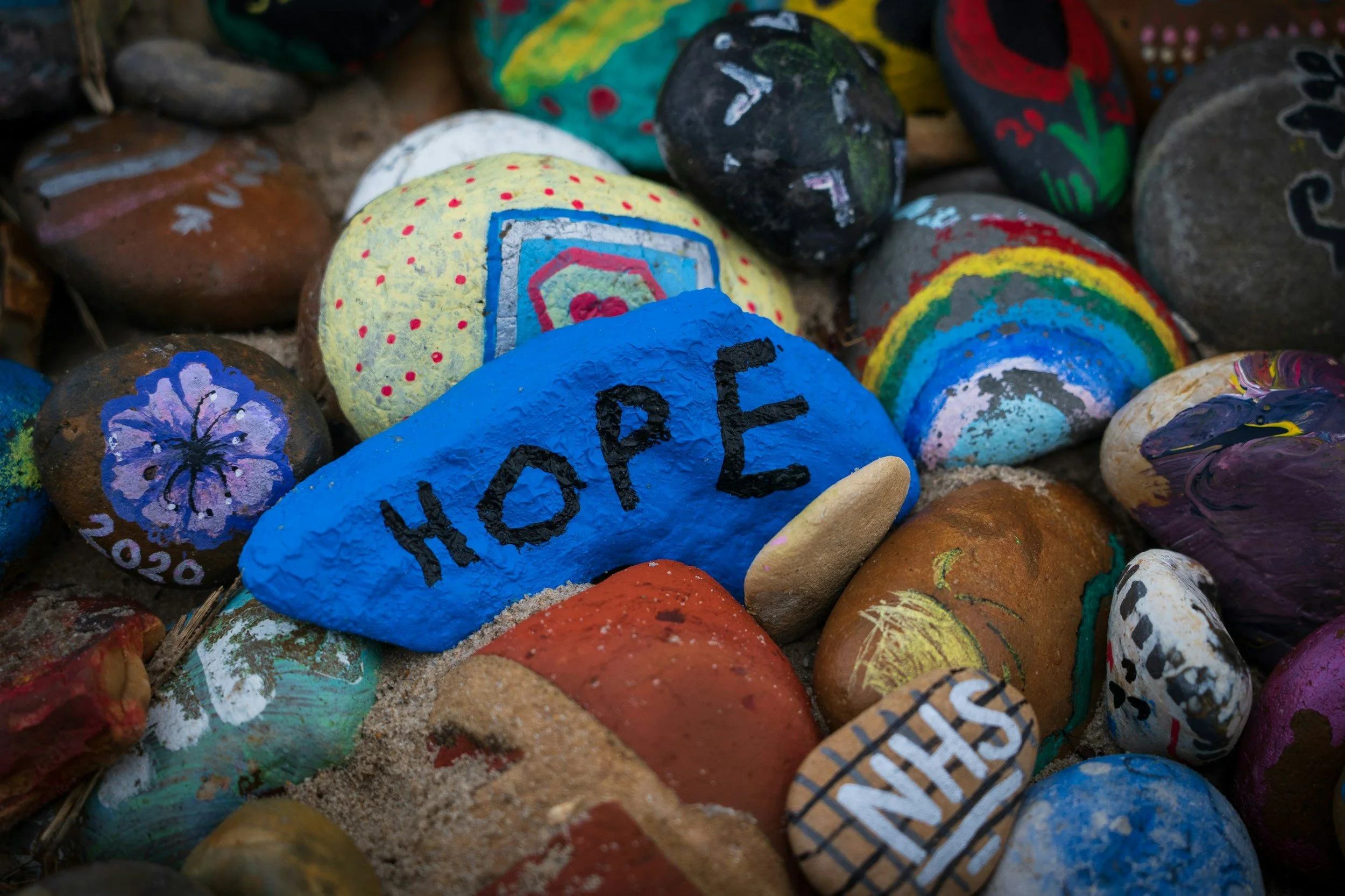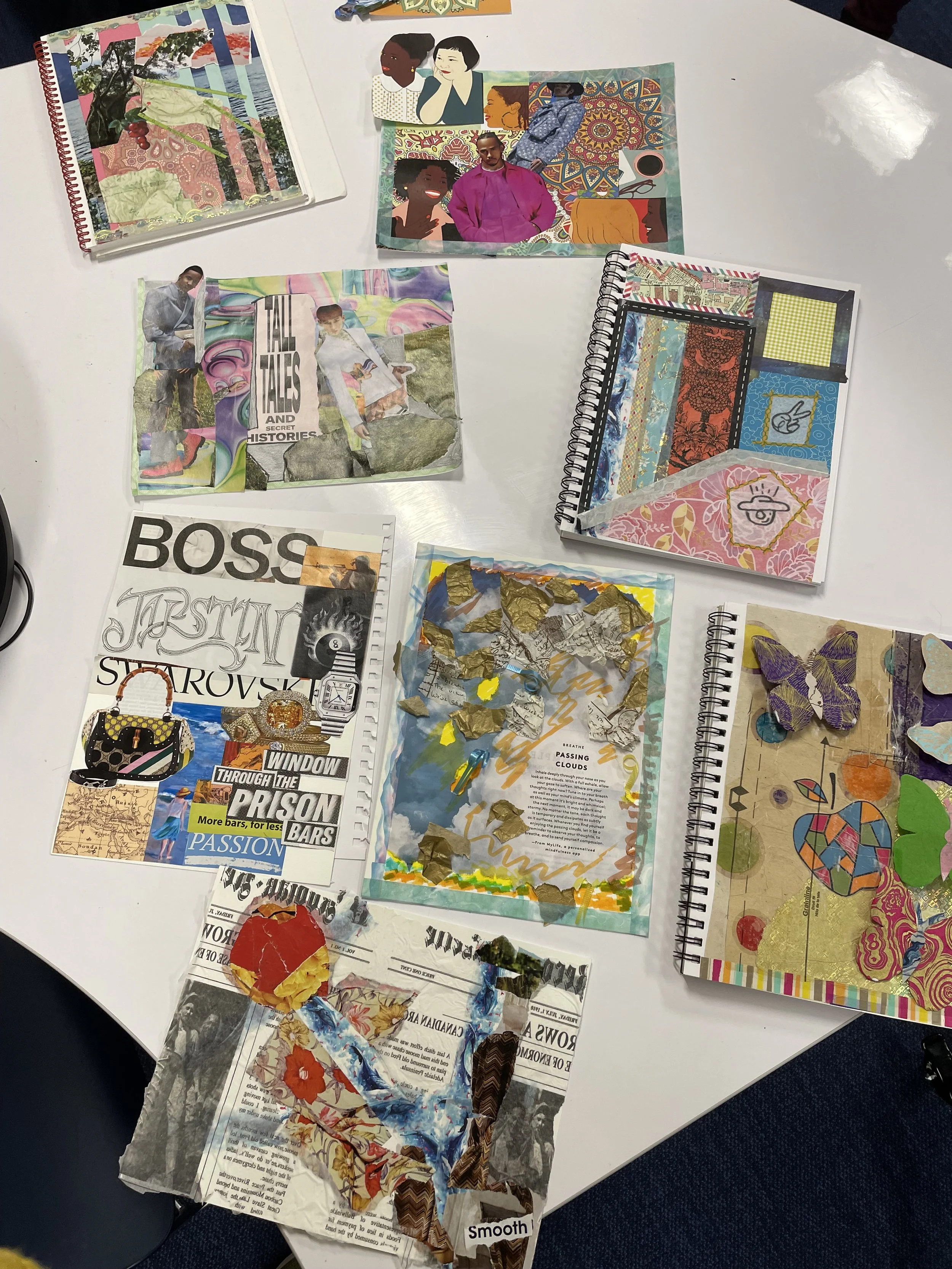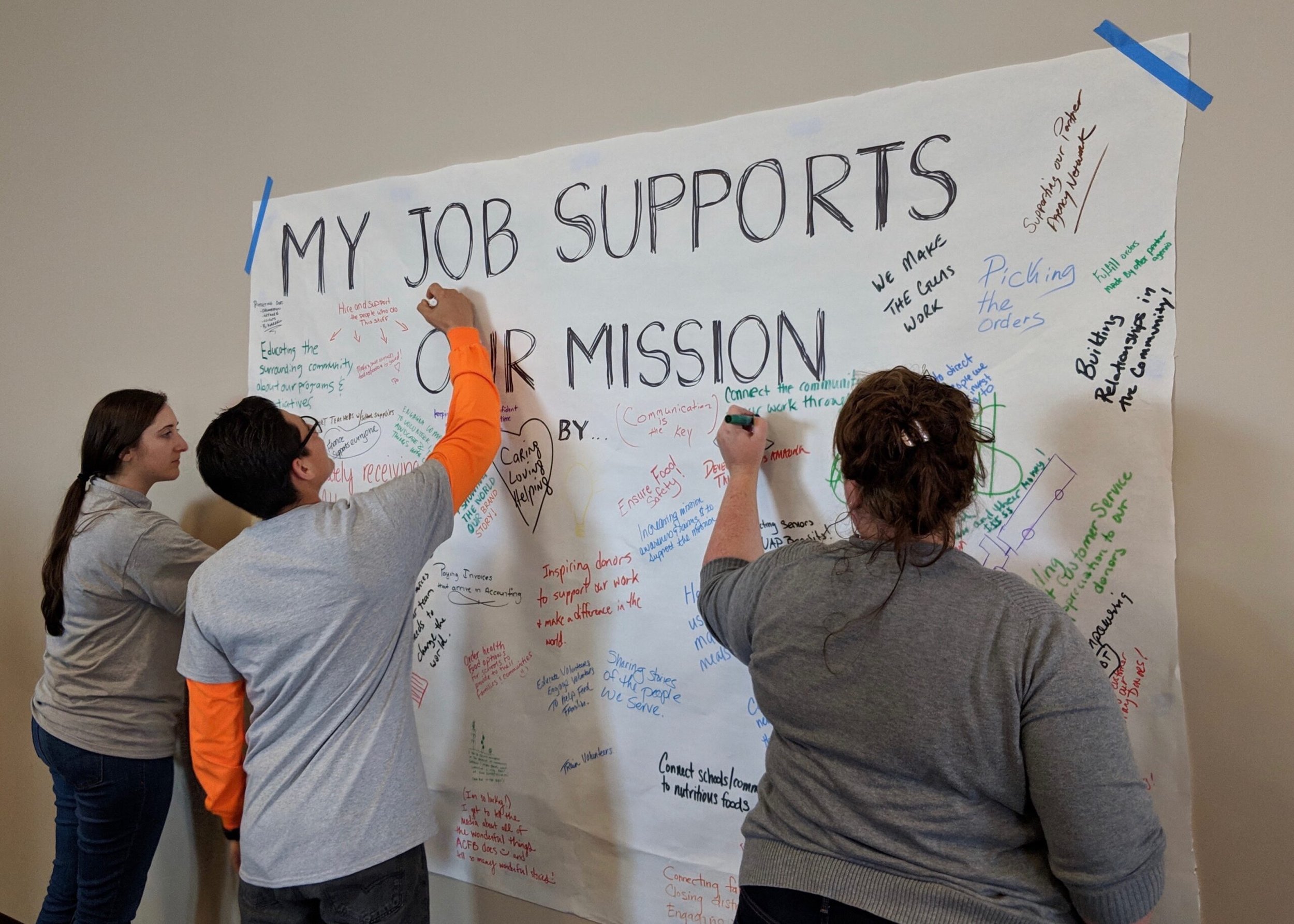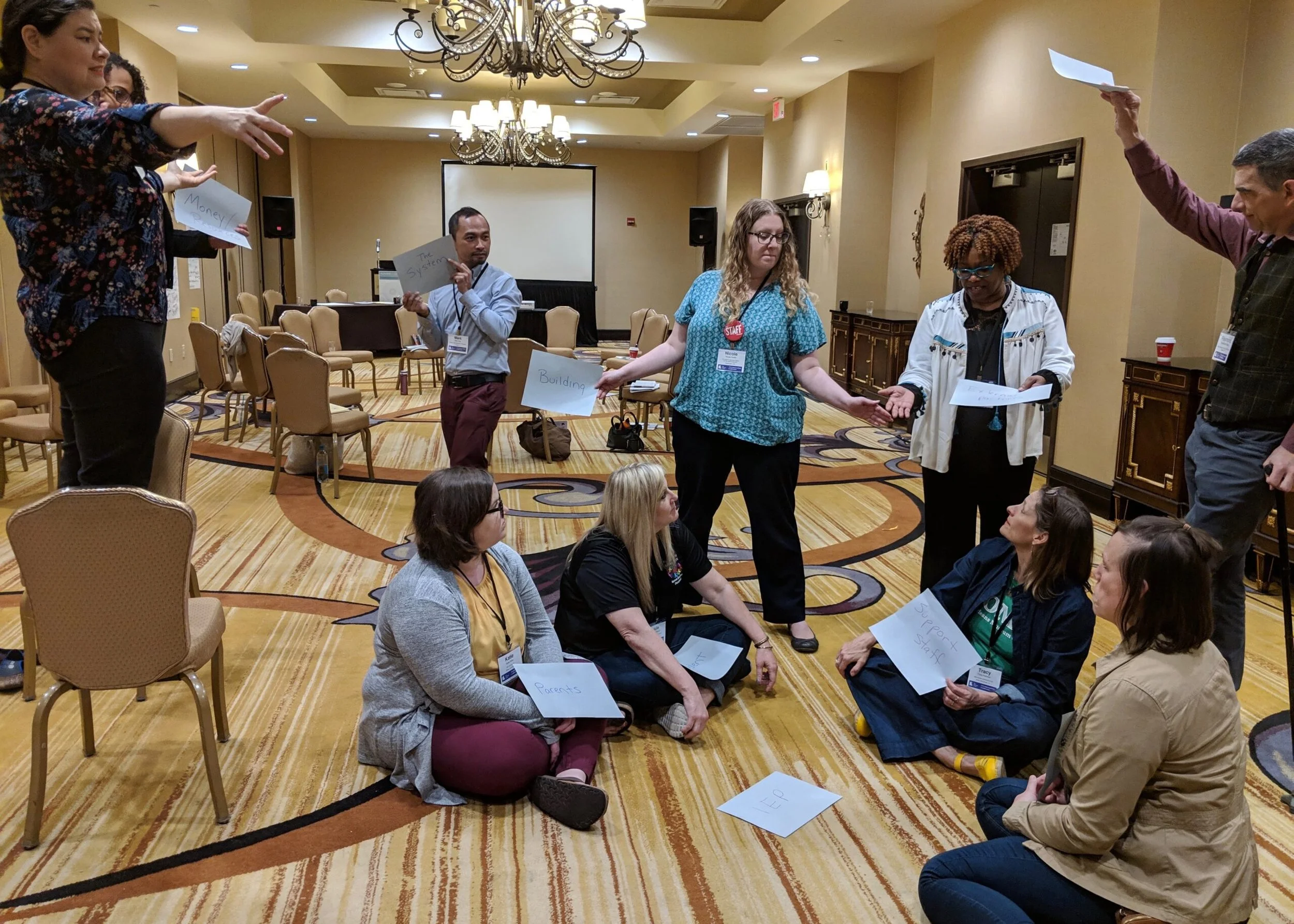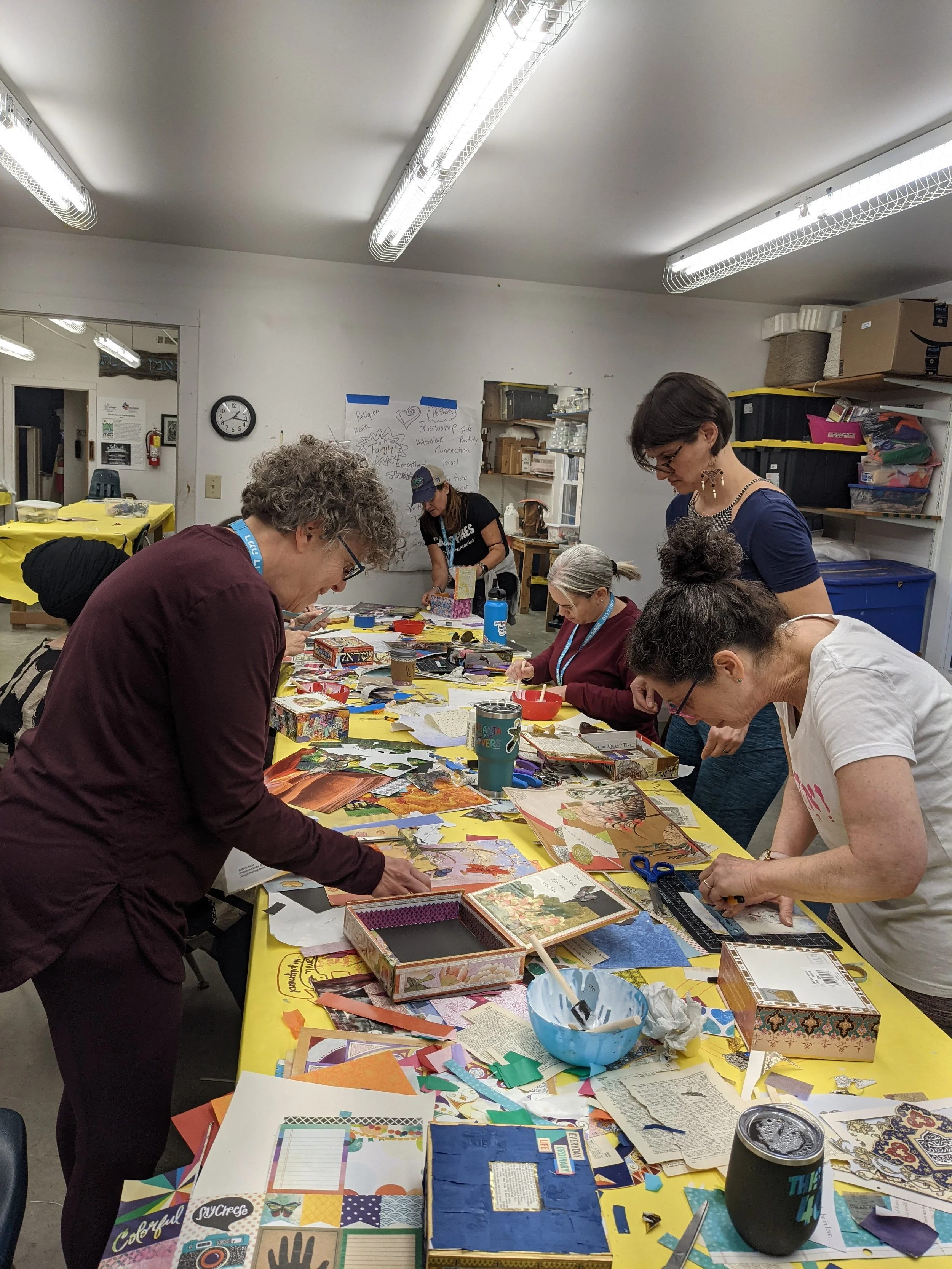
Creativity is how we make meaning, solve problems, and build culture.
I design creative, embodied experiences that help teams
collaborate, connect, and lead with confidence.
Where strategy meets imagination.
Workshops, facilitation, and retreats for educators, nonprofits, and values-driven organizations.
Creativity isn’t about being “artistic.”
It’s how we navigate complexity, adapt to change, and connect with each other.
Creativity supports:
Better problem-solving: Creative thinking unlocks new ideas and dissolves stuck patterns.
Wellbeing + mental health: Creative practices foster emotional resilience and reduce burnout.
Healthy culture: Art making builds trust, communication, and psychological safety.
Stronger alignment: Teams co-create shared language and vision, increasing buy-in and clarity.
When teams access creativity, they access their capacity to collaborate and thrive.
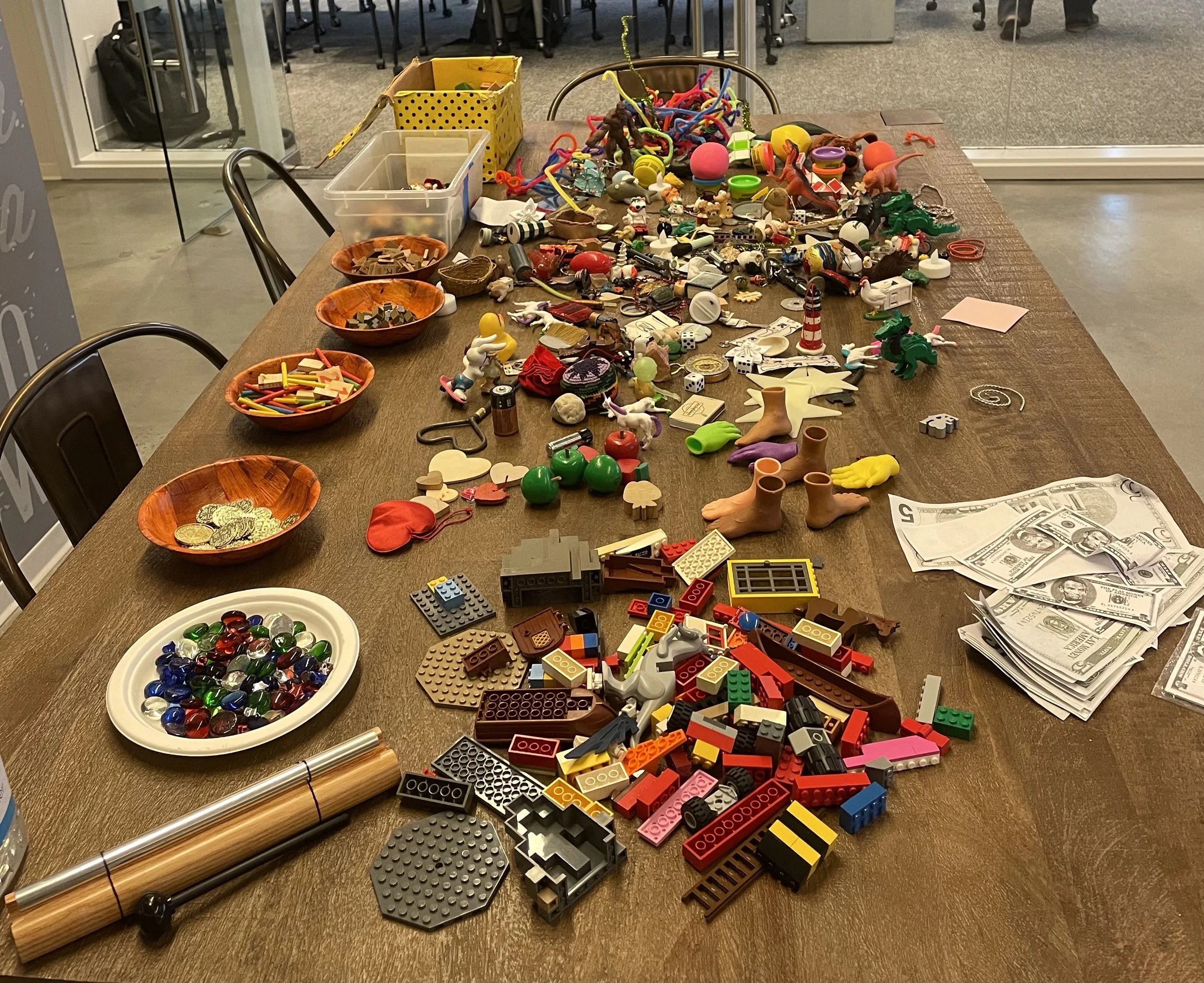
What I Do
Workshops
Hands-on, energizing experiences using collage, visual thinking, reflective writing, creative inquiry, and prototyping.
Perfect for team connection, retreats, conference sessions, and professional development.
Coaching
For executives, supervisors and managers, I coach on management techniques, tools for decision making and giving feedback , running effective meetings, knowing your people and more.
Vision + Strategy Retreats
Where imagination meets direction.
Through guided creative processes, storytelling, and collaborative ideation, your team co-creates a clear, purpose-driven roadmap.
Creative Wellness Programs for Educators & Nonprofits
Creative wellness sessions that support mental health, belonging, and resilience through art, reflection, and community care.
Rooted in my public health background and belief that wellbeing is collective.
I’m McKenzie Wren — facilitator, artist, strategist, and public health educator.
I help teams access creativity to strengthen connection, culture, wellbeing, and strategic clarity.

What our clients say
“It was a great event. You did an amazing job of keeping us moving through the retreat, and focused on the critical topics we needed to address, while ensuring folks were engaged and having a good time.”
Chris Thompson - Chattanooga Neighborhood Enterprise
“You did a wonderful job in presenting and provided valuable, pertinent information to our employees. The professionalism and attention to detail that you demonstrated throughout these trainings was truly exceptional. Your ability to connect with with the audience and bring the subject matter to life was truly remarkable. Thank you for creating a safe and supportive space for our employees to learn and grow.”
Patrice Lagroon, MPH, North Central Health District, Georgia Department of Public Health
“I hired McKenzie to help plan and facilitate an important retreat for my Center, as we were pivoting from a number programs now completed to an open future of possibilities. McKenzie’s gentle yet directed guidance made all present feel valued and included, deftly deflected distractions, and creatively shepherded us forward. She is a gifted facilitator.”
Paul Root Wolpe, PhD. Center for Ethics, Emory University
“I just wanted to extend a heartfelt thank you for your time, expertise, and generous support of the program. The feedback is incredibly positive. This day received so many 4s and 5s, and that is a direct reflection of the energy and care you put into it.
Your commitment to ensuring the class had a meaningful and impactful experience truly shows, and we could not have done this without you.”
Sara Reaves Hernandez - LEAD Atlanta
